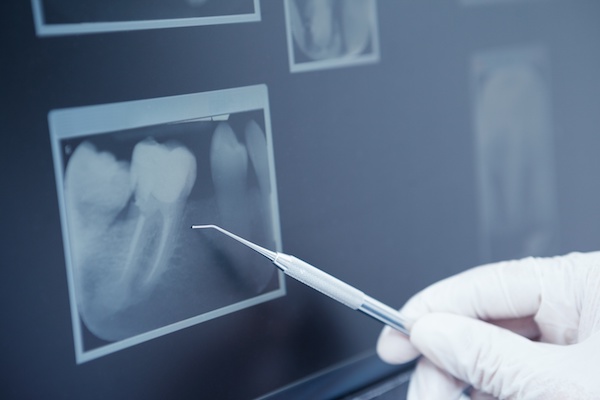
The History and Benefits of Dental X-ray Imaging
Dentistry is an ancient practice. The first dentist was Hesy-Re, according to a timeline presented by the American Dental Association, and he died in about 2600 BCE. New techniques and innovations helped dentistry develop throughout the centuries. One of the most important developments in dentistry was the dental x-ray.
Many dental problems occur below the gum line, where dentists cannot see them with the naked eye or with the help of a dental tool. Without x-rays, dentists would have to make an incision in the gums to see what was happening in the roots of the teeth or in the jawbone.
X-ray imaging, also known as radiography, helps medical professionals see inside the body without having to make an incision. Dental x-rays help dentists see what is happening to parts of the mouth that he or she cannot visualize with the naked eye or with the help of dental tools.
The images dental x-rays create help dentists detect abnormalities and diagnose problems, such as cavities and root abscesses.
Before the beginning of the 19th century, dentists could only diagnose dental problems by listening to the patients’ symptoms and looking inside the patients’ mouths – dental professionals had to imagine what was happening below the patients’ gum lines. The discovery of x-rays, and the invention of x-ray imaging changed all that.
History of Dental X-ray Imaging
German physicist Wilhelm Röntgen discovered the x-ray in 1895. While working in his cathode-ray tube laboratory one day, Röntgen noticed a fluorescent glow of crystals on a table near the tube on which he was working. He shielded the tube with a piece of heavy black paper, but the green-colored florescent glow still appeared in certain materials lying nearby. Röntgen determined that something was coming out of the tube, passing through the paper and making phosphorescent materials glow.
He also discovered that the rays could pass through human tissue but not bone and teeth. The bones and teeth would stop the ray, essentially creating a shadow. He learned how to make pictures from these shadows. In fact, one of his first experiments in 1895 was a film of his wife’s hand.
At that time, scientists understood that there are different types of radiation but they were not aware of the type of ray that Röntgen discovered. Scientists usually use the letter ‘x’ to describe something they have not yet identified, so Röntgen used the phrase ‘x-ray’ to describe his discovery. Despite efforts to change the name to Röntgen rays, the name x-ray stuck.
While Röntgen’s first experiments used x-rays in a medical capacity, the first use of x-rays was for an industrial application rather than a medical one. Doctors were quick to adopt the new technology, though, and surgeons were using radiographs within six months of the discovery.
Dentists were also quick to use the new technology. Prominent New Orleans dentist C. Edmund Kells took the first dental x-ray of a living person in the U.S. in 1896.
Technological advancements, such as faster film speed, improved image quality, and patient comfort. The influence of institutions, such as the American Dental Association and Victor X-Ray Company, helped establish x-ray technology as an accepted and necessary tool in dentistry.
Dentists began to use x-rays regularly in the 1950s. Today, x-rays are often a normal part of a routine dental exam.
Benefits of Dental X-ray Imaging
Dental x-rays give your dentist a picture of the hard tissues in your mouth, such as your teeth and bones. X-rays can also help your dentist visualize the soft tissues that surround your teeth and jawbones.
Using dental radiography, your dentist can detect:
- Caries, commonly known as tooth decay that can develop between your teeth or under fillings
- Diseases in your jaw bones
- Gum disease, also known as periodontal disease
- Infections under your gums
- Some types of tumors
X-rays can alert your dentist to changes in the hard and soft tissues in your mouth. Dental radiographs help dentists assess the development of teeth and bones in children. Dental x-rays can also help your dentist evaluate injuries to your face and mouth.
Dental x-rays help your dentist identify diseases and problems in the earliest stages when treatment works best.
For more information about the history and benefits of dental x-ray imaging, talk with your dentist in Melbourne, FL at Artistic Touch Dentistry.

